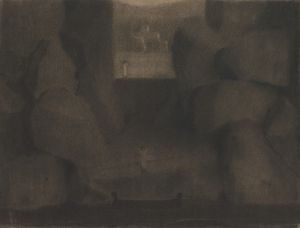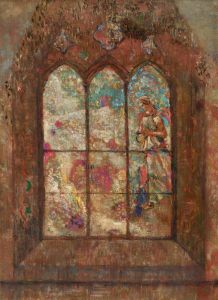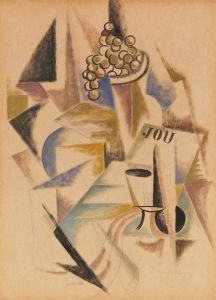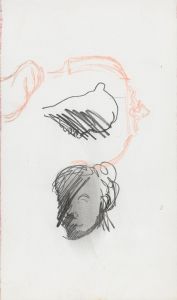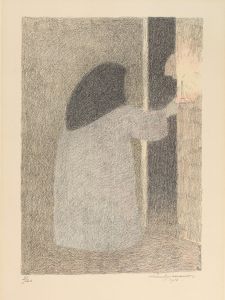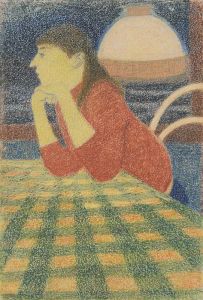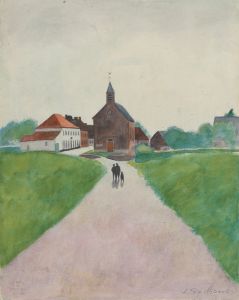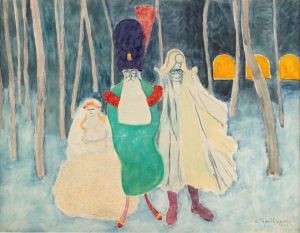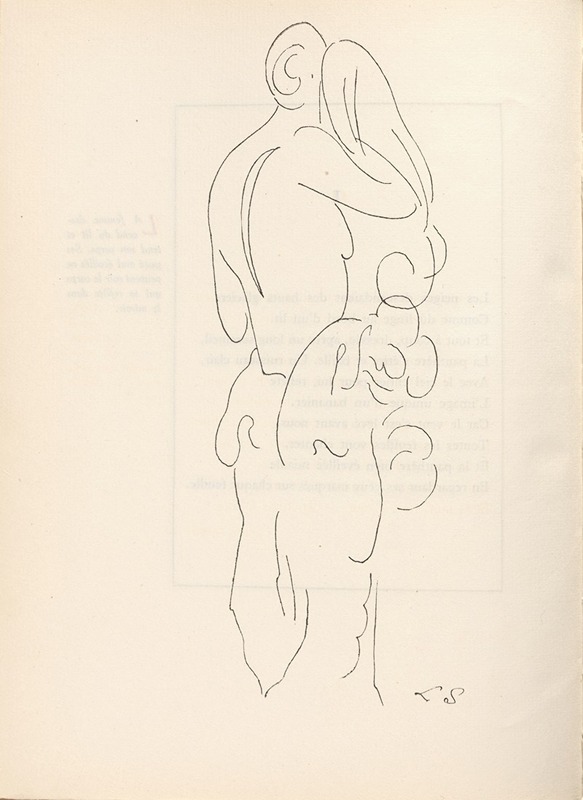
La Femme au Prisme
A hand-painted replica of Léon Spilliaert’s masterpiece La Femme au Prisme, meticulously crafted by professional artists to capture the true essence of the original. Each piece is created with museum-quality canvas and rare mineral pigments, carefully painted by experienced artists with delicate brushstrokes and rich, layered colors to perfectly recreate the texture of the original artwork. Unlike machine-printed reproductions, this hand-painted version brings the painting to life, infused with the artist’s emotions and skill in every stroke. Whether for personal collection or home decoration, it instantly elevates the artistic atmosphere of any space.
Léon Spilliaert (1881–1946) was a Belgian symbolist painter and graphic artist known for his unique style that often combined elements of symbolism and expressionism. His works frequently explore themes of solitude, introspection, and the metaphysical, often characterized by a haunting and atmospheric quality. One of his notable works is "La Femme au Prisme" (The Woman with the Prism), which exemplifies his distinctive approach to art.
"La Femme au Prisme" is a painting that reflects Spilliaert's fascination with the interplay of light and shadow, as well as his interest in the psychological depth of his subjects. The painting features a solitary female figure, a common motif in Spilliaert's work, depicted in a contemplative pose. The use of a prism in the composition suggests a focus on the refraction of light, which Spilliaert employs to create a sense of mystery and introspection. This technique allows the artist to explore the inner world of his subject, inviting viewers to ponder the deeper meanings behind the visual elements.
Spilliaert's work is often associated with the symbolist movement, which sought to express the emotional and spiritual experiences of the artist through symbolic imagery. In "La Femme au Prisme," the prism itself can be seen as a symbol of perception and the multifaceted nature of reality. The painting's subdued color palette and the subtle interplay of light and shadow contribute to its ethereal quality, drawing the viewer into a contemplative state.
The setting of the painting is minimalistic, with an emphasis on the figure and the prism, allowing the viewer to focus on the emotional and psychological aspects of the composition. Spilliaert's use of space and perspective creates a sense of isolation, a recurring theme in his work that reflects his own introspective nature and the existential concerns of the early 20th century.
Spilliaert was influenced by a variety of artistic movements and figures, including the symbolists and expressionists, as well as the works of Edgar Allan Poe and Friedrich Nietzsche. His art often reflects a deep engagement with the philosophical and existential questions of his time, and "La Femme au Prisme" is no exception. The painting invites viewers to explore the complexities of human perception and the ways in which we interpret the world around us.
Throughout his career, Spilliaert remained somewhat on the periphery of the mainstream art world, yet his work has gained recognition for its unique vision and emotional depth. "La Femme au Prisme" is a testament to his ability to convey profound psychological and philosophical themes through his art, making it a significant piece within his oeuvre.
In summary, "La Femme au Prisme" by Léon Spilliaert is a compelling example of the artist's ability to blend symbolism and expressionism to explore themes of introspection and perception. Through his masterful use of light, shadow, and minimalistic composition, Spilliaert creates a work that resonates with the viewer on both an emotional and intellectual level.





